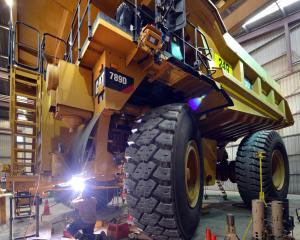It is a reasonable assumption to make that the Government has already lost the war of words over its hopes to permit more mining in the "conservation estate".
To individual opposition and to organised environmentalists can be added the Green Party, the Labour Party and anyone else who considers themselves to be guardians of the nation's remaining undeveloped sanctuaries.
That is a large group, quite possibly sufficiently motivated to vote against National and its partners on this issue alone at next year's general election.
Certainly, it is a reasonable assumption that opposition to the mining proposals will influence the outcome of the election.
That assumption is based on the almost total failure of the Government to prepare the public for reasoned debate - for reasoned debate is certainly needed - and it is now moot whether that particular task can overcome what has been a large emotional response.
The Government has not explained at all well why a device Parliament approved to protect conservation land from mining should be in some cases removed.
What, the people are entitled to ask, is such protection worth when it can be removed at the whim of the majority? The Minister of Mining and Energy, Gerry Brownlee, says the Government is "considering" opening up 7058ha of protected land because of New Zealand's "parlous financial position".
He argues that what is to take place is a "stocktake of mineral wealth in the conservation estate".
He published a discussion document this week, which will enable public contributions for consideration.
The land the Government intends removing from protection it estimates to contain minerals worth $60 billion.
More accurately, this sum is better described as potential wealth, but the minister was on more tenuous ground when he made a crude attempt to lessen concerns by saying the minerals extracted would be put to use in "green technologies", such as the manufacture of hybrid cars, wind turbines and even low-energy lightbulbs.
In fact, the nominated sites thus far are gold and coal-rich; they are not rare earths.
That begs the question: just who is being favoured here and exactly what is being traded?The Minister of Conservation, Kate Wilkinson, said any mining on conservation land would be subject to strict environmental tests, considered on a case-by-case basis, with conservation and environmental management a key consideration.
But her assurances must be considered in the context of the Government's intentions to change the Resource Management Act to meet the concerns of project developers, and to Mr Brownlee's strong hints of special arrangements, involving other ministers, for preferential access to the mineral resources.
They need also to be considered with regard to the Government's intentions to gather more information about other potential mineral-rich areas within the estate that could be mined, including parts of Stewart Island's Rakiura National Park.
And there can be little doubt National has bought a serious fight in Auckland, with its proposals to mine that area's playgrounds and holiday-home locations of Great Barrier Island and the Coromandel.
Mr Brownlee wants a "rational conversation" and argues that the amount of land involved is very small and should be viewed in its proper context.
That is fair comment, but the "conversation" ought not be limited to rhetoric but include a thorough cost-benefit analysis, site by site, and, in broader terms, the potential of mineral exploitation to have a deleterious impact on our other established industries, including tourism, and particularly on the value of the New Zealand dollar and the likely effect on exporters.
It should also include details of proposed royalties and tax arrangements - and the level of present interest by mining companies in the sites.
The concept of a conservation fund part-paid from royalties is a very small bone indeed in amends for effectively privatising parts of our national parks for the mining industry - something previous Labour governments also permitted.
The appeal of untold riches to solve New Zealand's debt problem is understandably attractive to politicians attracted to glittering answers; exactly the same forecasts were made for Scotland when gas and oil were discovered in the North Sea, although the reality for the Scottish people turned out to be somewhat different.
The Government's statements deliberately minimise the initial proposals by emphasising their relative size to the whole conservation estate, but they contradict the ambitious talk of Messrs Brownlee and Co about the potential wealth saving the economy; that there is "no choice" if New Zealanders want to maintain a high standard of living.
Given the potential political consequences for National, resolution of its proposals may come down to whether the Government is prepared to limit mineral exploitation to less sensitive areas and attempt to permanently protect the so-called "jewels" in the conservation estate.
Only a greater degree of disclosure and a good deal less hyperbole - on all sides - will assist the desired "rational conversation".



